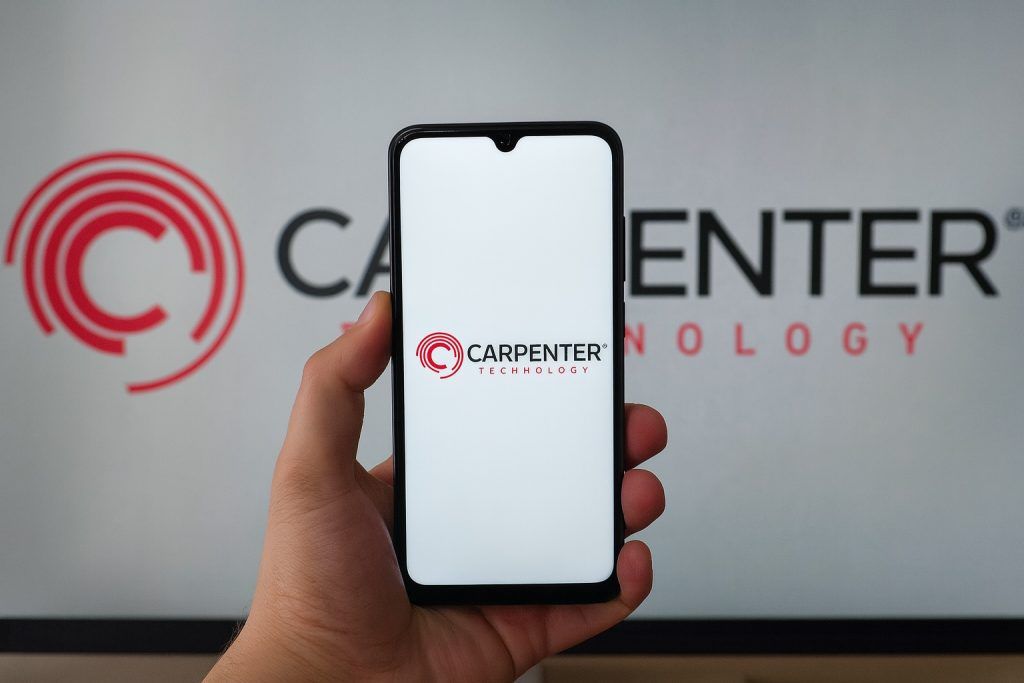Key Facts (as of Oct. 23, 2025):
- Stock Slips on Earnings: T-Mobile US (NASDAQ: TMUS) shares closed around $219 on Oct. 23, down roughly 3.5% for the day despite the company reporting strong quarterly results [1]. The stock had hovered near $230 earlier in the week, even rising about 1.4% on Oct. 14 amid tech sector gains [2], before sliding post-earnings.
- Q3 2025 Blowout – But Net Income Dips: The carrier beat Wall Street estimates for Q3, posting ~$21.96 billion in revenue (≈9% YoY growth) and diluted EPS of ~$2.41 [3] [4]. Record customer growth fueled the top-line, with 2.3 million total net additions (including 1.0 million postpaid phone subscribers) – the biggest Q3 in over a decade [5]. However, net income of $2.71 billion fell ~11% year-over-year due to a one-time $208 million software impairment charge [6].
- Raised Guidance (Slightly): T-Mobile nudged its full-year 2025 outlook upward. It now expects postpaid customer adds of ~5.5–6.0 million (vs ~5.0–5.5 M prior) and higher free cash flow of ~$17.5–18 billion [7] [8]. Executives also announced $2.5 billion in additional share buybacks this quarter and reaffirmed a $1.00/share annual dividend [9]. While positive, the guidance hike was modest – a point not lost on investors.
- CEO Transition on Deck: This earnings call was CEO Mike Sievert’s last. After spearheading the “Un-carrier” revolution and Sprint merger, Sievert is stepping down, handing the reins to COO Srini Gopalan on Nov. 1. Sievert touted T-Mobile’s journey from “a scrappy challenger into the world’s most successful… telecom company, going from last to first” under his tenure [10]. Incoming chief Gopalan has pledged continuity, expressing “enormous conviction” in T-Mobile’s strategy and its “widening differentiation” in network quality and customer experience [11] [12].
- Telecom Turf Wars: T-Mobile’s rapid 5G expansion and aggressive promotions have solidified its #2 position in the U.S. wireless market (just behind Verizon). It’s pulling further ahead in subscriber growth, even as rivals regroup. Verizon recently brought in a new CEO (ex-PayPal chief Dan Schulman) amid strategic uncertainty [13], and AT&T is investing heavily in fiber broadband while playing catch-up in 5G home internet (AT&T has ~1.3 M fixed wireless users vs T-Mobile’s ~8 M) [14]. Regulators now acknowledge the “Big Three” carriers control over 90% of U.S. mobile subscriptions [15] after T-Mobile’s latest acquisition spree – a consolidation the DOJ reluctantly blessed, noting UScellular “simply could not keep up,” and consumers benefit from a “stronger T-Mobile” [16].
Stock Price Recap: October Volatility Around Earnings
Chart: TMUS stock price fluctuated in October 2025, peaking above $230 before a post-earnings drop toward $219. [17] [18]
T-Mobile’s stock was on a steady climb in the days leading up to earnings – trading in the upper-$220s and even touching $230 – but Oct. 23 delivered a jolt. Shares opened around $225 and sold off about 3–4% by afternoon, closing near $219 [19]. This pullback erased the week’s earlier gains; on Oct. 14, TMUS had briefly jumped ~1.4% during a broader tech rally [20].
Why the sudden slide on what looked like good news? It appears investors took profits (“sell the news”) after a strong run, and began parsing the fine print of T-Mobile’s report. Trading volume spiked on Oct. 23, and analysts pointed to a few caution flags that tempered the otherwise upbeat narrative. As we’ll see, the disconnect between record-breaking performance and the stock’s stumble boils down to expectations – and whether T-Mobile’s future looks as bright as its recent past.
Earnings Highlights: Record Growth Meets Mixed Headlines
By the numbers, T-Mobile’s Q3 2025 was stellar. The company added customers at a record clip and beat earnings estimates, continuing its post-Sprint merger winning streak. Revenue came in at $20.9–22.0 billion (reports vary, ~+6–9% YoY) and easily topped forecasts [21]. Adjusted earnings of about $2.58 per share also surpassed consensus (~$2.47) [22]. Importantly, core wireless service revenues grew ~12% – far outpacing AT&T and Verizon – thanks to those big subscriber gains [23] [24]. T-Mobile’s postpaid phone net adds hit 1.0 million, the highest Q3 in over 10 years (Wall Street had expected around 0.8M) [25]. And its “High Speed Internet” user base (5G home broadband) swelled by 506,000 in the quarter, exceeding projections (New Street Research forecast ~451k) [26]. In short, the growth engines are firing: T-Mobile is capturing mobile customers and home internet users at an industry-leading rate.
Yet not every metric was perfect. Net income declined to $2.7 billion, from ~$3.0 B a year ago [27] [28]. The dip was due largely to a one-time $208 million impairment (write-down of some IT development costs) [29] – without that charge, profits would actually be up. Still, it shows that even as T-Mobile grows, it’s not immune to expenses and accounting hits. The company’s massive 5G rollout and integrations (Sprint in 2020, smaller acquisitions since) come with costs that can occasionally dent the bottom line.
T-Mobile’s executives understandably focused on the positive. Sievert, on his farewell call, lauded “industry-leading customer results across the board” and bragged that T-Mobile went “from last to first with the best network, best value, and best experience” in wireless [30] [31]. It’s hard to argue when you look at the subscriber trends. The Un-carrier has leveraged its 5G head start (T-Mobile’s 5G covers 326 million people, more than Verizon/AT&T) into real market share gains. In Q3, postpaid phone churn was just 0.89% – meaning T-Mobile is keeping nearly all its customers, even as it adds more [32]. By contrast, rivals have seen slightly higher churn as they raise prices on legacy plans.
So what’s the catch? For one, some of T-Mobile’s growth was expected – and even with a beat, investors had priced in a lot of good news. The stock had already climbed about 7% year-to-date and 60+% over the past three years [33]. Additionally, a portion of those subscriber gains came from acquisitions. T-Mobile closed a $4.4 billion deal for regional carrier UScellular’s customers in August, which instantly “absorbed” roughly 4.5 million subscribers into T-Mobile’s base [34] [35]. (It also acquired smaller fiber ISPs Lumos and MetroNet to jump-start its home broadband business [36].) These deals supercharged 2025’s numbers – but such one-off boosts won’t repeat annually. Some analysts are watching organic growth (excluding acquisitions) and noting that the torrid pace of home broadband sign-ups may eventually slow as the market matures.
Why the Stock Fell: Tempered Guidance and Cautious Sentiment
If T-Mobile is firing on all cylinders, why did its stock slip? In a word: expectations. The company did raise its full-year guidance, but only by a hair, and that seems to have underwhelmed the market. Management modestly lifted its 2025 outlook – not a major acceleration [37] [38]. For example, T-Mobile now targets 5.5–6.0 M postpaid net adds this year, up from a prior 5.0–5.5 M (a bump largely due to the UScellular deal). Similarly, core adjusted EBITDA guidance went up just ~$0.2 B (to $33.2–33.7 B) [39]. These tweaks signal confidence, but not a huge upside surprise. As one market watcher put it, T-Mobile “beat on EPS and revenue but [the] stock [is] still sliding on lower than expected guidance” [40] [41]. In other words, some investors were hoping for an even more bullish forecast given the strong quarter – perhaps a sign that T-Mobile could accelerate growth or profits further. Instead, management’s outlook came across as business-as-usual growth, not a dramatic step-up.
Another factor is the home broadband business. T-Mobile’s Fixed Wireless Access (FWA) service (branded “5G Home Internet”) has been a breakout hit, adding millions of users as an alternative to cable internet. But there’s a growing sense that this gold rush may moderate. In Q3, T-Mobile’s reported 506k broadband net adds included about 141k customers acquired from UScellular [42]. Excluding acquisitions, the organic add number was likely lower than in previous quarters (for instance, T-Mobile added 523k FWA users in Q3 last year purely organically). Company officials have said the addressable market for FWA is finite – at some point, spectrum capacity constraints mean they’ll be pickier about new home internet customers. So while FWA is still growing fast, analysts are debating how many years of hyper-growth remain. Investors seemed to latch onto this nuance, especially combined with the just-okay guidance raise. The result: a bit of profit-taking on the stock. As 24/7 Wall St. noted, shares fell ~4% as investors weighed the pace of broadband additions and the modest size of management’s guidance bump [43].
Finally, valuation is a consideration. Even after the dip, T-Mobile trades around 21× earnings, which is not cheap for a telecom. (Verizon, for comparison, trades near 10×; the wireless industry average P/E is ~18× [44].) T-Mobile enjoys a premium because of its superior growth, but that also means high expectations are baked in. “This premium suggests investors have already paid up for future gains,” cautions an analysis by Simply Wall St, adding that if growth slows, the stock’s rich valuation could be at risk [45]. In short, T-Mobile is a victim of its own success: it’s executing so well that the bar keeps rising – leaving less room to wildly outrun expectations. The Q3 report was excellent, but in the market’s eyes not excellent enough to push the stock higher from here.
New Leadership, Same Strategy: Sievert Out, Gopalan In
T-Mobile’s post-earnings drop overshadowed a significant milestone: a changing of the guard in Bellevue. CEO Mike Sievert, who has led T-Mobile since 2020, is stepping down at the end of October. Sievert’s departure was announced previously, but the Q3 call was effectively his swan song – and something of a victory lap. During the call, executives clinked champagne flutes in a light-hearted sendoff [46]. Sievert used the moment to reflect on T-Mobile’s remarkable run. “Together this team has done what most thought was impossible,” he said, transforming T-Mobile “from a scrappy challenger into the world’s most successful and customer-centric telecommunications company” [47]. It’s not hyperbole: when Sievert joined T-Mobile a decade ago, it was a distant #4 carrier known for crazy ads and limited coverage. Today, thanks to bold moves (unlimited data, no contracts, free Netflix, etc.) and big mergers, T-Mobile is an industry giant setting the pace on many fronts. Sievert can indeed claim credit for shepherding the Un-carrier era to its pinnacle.
Starting November 1, the new CEO will be Srini Gopalan, a seasoned executive from parent company Deutsche Telekom. Gopalan has been T-Mobile’s COO and was hand-picked to continue the current gameplan. On the earnings call, he reassured everyone that no drastic changes are coming. “I have enormous conviction in what the team outlined… Everything we’ve seen in the last year makes us double down on our convictions that we’re heading in the right direction,” Gopalan said [48]. He emphasized “widening differentiation” – basically, extending T-Mobile’s edge in network quality, value, and customer service – as the key to “continued profitable growth” [49]. In practice, that means T-Mobile will keep doing what it’s been doing: stealing customers from AT&T and Verizon with better 5G coverage and aggressive offers, expanding into home broadband (via 5G and fiber partnerships), and streamlining the customer experience (T-Mobile’s app and digital tools are highly rated, part of its “digital transformation”). Gopalan signaled interest in further fiber broadband expansion via partnerships – T-Mobile this year acquired regional fiber providers (Lumos, MetroNet) through joint ventures with investment firms [50]. That “capital-light” approach lets T-Mobile offer ultra-fast fiber internet in certain areas without having to build it all from scratch or bear all the cost. Expect more such moves as T-Mobile seeks to compete not just with wireless, but in the broader internet-provider market.
Notably, Gopalan did not foreshadow any big departures from Sievert’s strategy. There had been speculation: would a new CEO seek a major acquisition, or a radical new revenue stream? For now, the answer seems to be no. Gopalan’s stance is essentially “steady as she goes.” And investors appear comfortable with that – after all, T-Mobile’s formula is clearly working. Wall Street will be watching how Gopalan handles upcoming challenges (like a large mid-band spectrum auction next year, and the continued integration of acquired customers). But internally and externally, the message is continuity. As one longtime telecom analyst quipped, “the best gift Mike Sievert gave Srini Gopalan is a well-oiled machine.” The new chief’s job is mainly to keep the machine humming.
Competitive Landscape: T-Mobile’s Edge and Sector Shake-Ups
T-Mobile’s rise has come at the expense of its competitors, and they are not standing still. Here’s a quick look at the telecom battlefield as T-Mobile enters this new phase:
- Verizon (VZ): Still the nation’s largest carrier by subscriber count, Verizon has been on the back foot lately. The company shocked the industry on Oct. 6 by naming Dan Schulman (former PayPal CEO) as its new chief executive, replacing Hans Vestberg [51]. The move signaled Verizon’s urgency to reboot growth. Investors, however, reacted cautiously – Verizon’s stock slipped on uncertainty over Schulman’s strategy [52]. Analysts have noted that Verizon faces pricing pressure and high capital expenditures, with tough competition from AT&T, T-Mobile, and even cable operators eroding its subscriber gains [53]. Verizon has a stellar network reputation, but it’s been losing consumer market share and was slow to roll out unlimited plan perks compared to T-Mobile. Its new CEO is expected to focus on stemming customer losses (perhaps by matching T-Mobile’s value offers) and monetizing Verizon’s heavy investment in 5G and fiber.
- AT&T (T): The storied telecom giant has taken a different path, emphasizing a return to core connectivity and massive fiber-optic buildouts. AT&T spent much of the last year extending fiber broadband to millions of homes, aiming to be a one-stop shop for internet and wireless. It has also cautiously entered the fixed wireless arena – launching Internet Air, a 5G home internet product. However, AT&T’s fixed wireless subscriber base (~1.27 M in total) remains a fraction of T-Mobile’s (~8 M) [54]. In wireless, AT&T has been holding its own – it added a solid number of postpaid phone subscribers in Q3 (nearly as many as T-Mobile, excluding T-Mo’s one-time boosts). But AT&T’s strategy of raising prices on older plans to push customers into newer, pricier plans has been a double-edged sword: it’s improved ARPU (average revenue per user) but risks higher churn. Meanwhile, AT&T’s heavy debt from past mergers remains a concern. In short, AT&T is focused on balancing growth with financial discipline. T-Mobile’s disruptive pricing puts AT&T in a tough spot: match the discounts (hurting revenue) or risk losing more customers.
- Cable & Dish – the “Fourth” Competitors: Beyond the Big Three wireless carriers, U.S. consumers have a couple of other options nibbling at the margins. Cable companies Comcast (Xfinity Mobile) and Charter (Spectrum Mobile) have actually been growing their mobile subscriber base rapidly – they offer wireless service by reselling Verizon’s network capacity at low prices bundled with home internet. This has given price-sensitive customers an alternative, and it’s one reason Verizon and AT&T have lost some subscribers. T-Mobile, interestingly, has less exposure to this threat since it isn’t the wholesale provider for cable (Verizon is), and T-Mobile competes fiercely for the same customers with its own home internet + wireless bundles. Then there’s Dish Network, which aspires to be a new fourth facilities-based carrier (it acquired Boost Mobile and some spectrum as part of the T-Mobile/Sprint merger deal). Dish has launched a 5G network in some cities, but its progress is slow, and it’s losing money and subscribers in the meantime. Industry experts doubt Dish can mount a serious challenge; as one analyst put it, “UScellular simply could not keep up” as a regional player, and Dish’s path as a national player looks “narrow and treacherous.” [55] [56] There’s even speculation Dish might eventually sell its spectrum to one of the Big Three, effectively conceding defeat [57]. Regulators are wary of that outcome – having only three nationwide carriers isn’t ideal for competition long-term. But for now, T-Mobile, AT&T, and Verizon call the shots, with over 90% of U.S. mobile subscriptions between them [58].
Notably, T-Mobile’s recent moves have further tilted the field in its favor. The UScellular acquisition (completed in August) gave T-Mobile a stronger foothold in many rural markets where it historically lagged. It gained not just customers but also valuable low-band spectrum and cell tower agreements [59] [60]. “Consumers would benefit from a stronger T-Mobile,” the DOJ said in approving that deal, acknowledging that even though it concentrates the market, T-Mobile’s expanded network could improve service in areas that had been underserved [61]. Now, with the largest, fastest 5G network, T-Mobile is leveraging that network leadership to poach high-value customers (including businesses and government clients) who might not have considered it years ago. Its challenge ahead will be to maintain network superiority – Verizon and AT&T aren’t far behind on 5G coverage now – and continue innovating on price and perks to stay a step ahead.
Outlook: Analysts See Upside – With a Few Caveats
Despite the stock’s recent dip, the broader outlook on T-Mobile remains optimistic. Many analysts and experts believe the company’s fundamentals are strong and that the post-earnings slide may be a short-term reaction. Here’s what the “smart money” is saying:
- Wall Street is Bullish: Among 21 analysts covering TMUS, the consensus rating is a resounding “Buy.” The average 12-month price target is about $261, which implies roughly a 19% gain from the current stock price [62]. In fact, October saw multiple analyst upgrades for T-Mobile. For example, Wells Fargo raised its rating to “Buy” on Oct. 16, applauding T-Mobile’s “standout 5G coverage and continued subscriber growth,” and bumped its price target to $260 [63]. RBC Capital also upgraded T-Mobile to Buy around the same time with a ~$270 target [64]. The message: T-Mobile’s competitive advantages in 5G and customer momentum are expected to translate into further revenue and earnings growth, making the stock attractive at current levels.
- Big Growth Ahead (but Priced In?): Looking at T-Mobile’s financial trajectory, analysts forecast double-digit earnings expansion over the next year. The company itself projects full-year 2025 adjusted EPS around $10.46 (up ~8% YoY) and 2026 EPS around $12.67 (another ~21% jump) [65] [66]. Revenue is expected to approach $95 billion in 2026 (from ~$89 B this year) [67]. These are strong numbers for a telecom firm, reflecting ongoing synergies from the Sprint merger and growth in new areas like broadband. T-Mobile’s stockholder returns policy is also a positive: the company has been aggressively buying back shares (reducing float) and initiated a dividend last year. It returned $3.5 B to shareholders in Q3 alone via $2.5 B in buybacks plus nearly $1 B in dividends [68] [69]. This shareholder-friendly approach suggests management’s confidence in cash flow stability. “T-Mobile continues to generate cash at an accelerating rate,” noted 24/7 Wall St, highlighting a 35% YoY jump in operating cash flow and 31% rise in free cash flow last quarter [70] [71]. That cash is fueling both network investments and returns to investors – a balance analysts like.
- Risks & Reservations: On the cautionary side, some experts warn that T-Mobile’s easy growth wins might be behind it. Competition is intensifying – Verizon and AT&T won’t cede market share without a fight, and both are now laser-focused on their wireless core businesses after dabbling in media. If promotional wars heat up (e.g. bigger phone discounts, cheaper family plans), T-Mobile may have to spend more on marketing or sacrifice some pricing power to keep growing. There’s also the matter of spectrum: T-Mobile has enjoyed a lead in mid-band 5G spectrum, but upcoming FCC auctions (like the 3.45 GHz band) and refarming of other frequencies could narrow that gap. The company’s network lead is durable for now, but not permanent if others invest heavily. Financially, while T-Mobile’s debt is very manageable (leverage is lower now post-Sprint integration), rising interest rates and capital spending needs (for 5G, fiber, etc.) could pressure free cash flow in the long term. And as mentioned, valuation is a concern. If economic conditions worsen or if T-Mobile ever stumbles on subscriber growth, the stock’s premium could compress. Some investors also note that telecom is a historically cyclical, defensive sector – after a big multi-year run, it wouldn’t be unusual for growth to moderate.
The bottom line: T-Mobile enters late 2025 as a clear industry leader, with strong financials and strategic momentum. The slight pullback in TMUS shares after earnings seems to reflect short-term jitters, not a fundamental red flag. The company has navigated past challenges (mergers, tech transitions) exceptionally well and emerged stronger. With a new CEO committed to the same game plan, T-Mobile is poised to keep building on its strengths: a fast, expansive network; savvy marketing; and a growing presence in segments like home internet. Most analysts agree that if T-Mobile continues executing – adding customers and beating financial targets – its stock has room to rise further. As one contrarian model noted, T-Mobile isn’t a screaming bargain at current valuations, scoring a 57% (out of 100) on a value-oriented contrarian stock checklist [72] – but that reflects a high price tag on an undeniably high-quality business. For long-term investors, T-Mobile’s growth story in the 5G era still looks compelling. And for consumers, the “Un-carrier” will likely keep the wireless price wars alive, which is perhaps the best news of all in this competitive climate.
Sources: T-Mobile Newsroom; ts2.tech financial news [73] [74] [75]; 24/7 Wall St [76] [77]; Light Reading [78] [79]; Bloomberg; RCR Wireless [80] [81]; Simply Wall St [82] [83]; Stockanalysis/MarketBeat data [84] [85].
References
1. stockanalysis.com, 2. ts2.tech, 3. www.lightreading.com, 4. 247wallst.com, 5. www.lightreading.com, 6. www.lightreading.com, 7. 247wallst.com, 8. 247wallst.com, 9. 247wallst.com, 10. www.t-mobile.com, 11. www.lightreading.com, 12. www.lightreading.com, 13. ts2.tech, 14. www.lightreading.com, 15. www.rcrwireless.com, 16. www.rcrwireless.com, 17. stockanalysis.com, 18. ts2.tech, 19. stockanalysis.com, 20. ts2.tech, 21. 247wallst.com, 22. 247wallst.com, 23. www.t-mobile.com, 24. www.lightreading.com, 25. www.lightreading.com, 26. www.lightreading.com, 27. 247wallst.com, 28. www.lightreading.com, 29. www.lightreading.com, 30. www.t-mobile.com, 31. www.t-mobile.com, 32. www.t-mobile.com, 33. simplywall.st, 34. www.bloomberg.com, 35. www.rcrwireless.com, 36. www.lightreading.com, 37. 247wallst.com, 38. 247wallst.com, 39. 247wallst.com, 40. 247wallst.com, 41. 247wallst.com, 42. www.t-mobile.com, 43. 247wallst.com, 44. simplywall.st, 45. simplywall.st, 46. www.lightreading.com, 47. www.t-mobile.com, 48. www.lightreading.com, 49. www.lightreading.com, 50. www.lightreading.com, 51. ts2.tech, 52. ts2.tech, 53. ts2.tech, 54. www.lightreading.com, 55. www.rcrwireless.com, 56. www.rcrwireless.com, 57. www.rcrwireless.com, 58. www.rcrwireless.com, 59. www.rcrwireless.com, 60. www.rcrwireless.com, 61. www.rcrwireless.com, 62. stockanalysis.com, 63. stockanalysis.com, 64. stockanalysis.com, 65. stockanalysis.com, 66. stockanalysis.com, 67. stockanalysis.com, 68. www.t-mobile.com, 69. www.t-mobile.com, 70. 247wallst.com, 71. 247wallst.com, 72. ts2.tech, 73. ts2.tech, 74. ts2.tech, 75. ts2.tech, 76. 247wallst.com, 77. 247wallst.com, 78. www.lightreading.com, 79. www.lightreading.com, 80. www.rcrwireless.com, 81. www.rcrwireless.com, 82. simplywall.st, 83. simplywall.st, 84. stockanalysis.com, 85. stockanalysis.com







